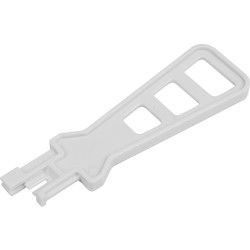- Joined
- 12 Apr 2019
- Messages
- 3
- Reaction score
- 0
- Country

Hi all
I have a question on incoming phone wiring and broadband and wonder if anyone can offer any guidance.
The incoming overhead telephone cable terminates on the outside wall at an ancient junction box. The remainder of the wiring is in 8-strand telephone cable – it runs along the outside wall, enters the house through a hole in the wall, has a hand-twisted splice under the floor boards, and then continues to an old-style standard phone point.

The house dates from 1920s, with the 8-strand telephone cabling and internal telephone points installed some 25 years ago. No modern Openreach master socket.
Our high speed broadband service has frequent drop-outs at busy periods. My ISP says that their remote checks on the line indicate the connection to be good all the way to my router.
I’m considering bringing the cabling up to date in any case, as I’d like to eliminate this as a cause - but without spending too much money!
So, questions are:
Thanks for any advice.
I have a question on incoming phone wiring and broadband and wonder if anyone can offer any guidance.
The incoming overhead telephone cable terminates on the outside wall at an ancient junction box. The remainder of the wiring is in 8-strand telephone cable – it runs along the outside wall, enters the house through a hole in the wall, has a hand-twisted splice under the floor boards, and then continues to an old-style standard phone point.
The house dates from 1920s, with the 8-strand telephone cabling and internal telephone points installed some 25 years ago. No modern Openreach master socket.
Our high speed broadband service has frequent drop-outs at busy periods. My ISP says that their remote checks on the line indicate the connection to be good all the way to my router.
I’m considering bringing the cabling up to date in any case, as I’d like to eliminate this as a cause - but without spending too much money!
So, questions are:
- How reliable have people found an ISP's line connection checks to be?
- Where does the boundary between Openreach’s responsibility and my responsibility lie in this case?
- Does either my ISP or Openreach have any obligation to improve the wiring or install a master socket?
- With respect to 3. above, my ISP tells me they don’t have any obligation as their line checks say the line is good, but that I could get anybody, not necessarily Openreach, to do this work at my own expense. Does that sound correct? I thought Openreach had to carry out the work to their sections of the line? It would make sense if Openreach’s responsibility ended at the external junction box, I suppose (hence question 2!).
Thanks for any advice.

